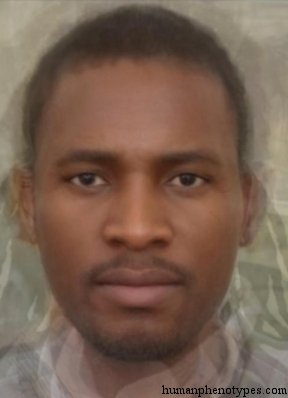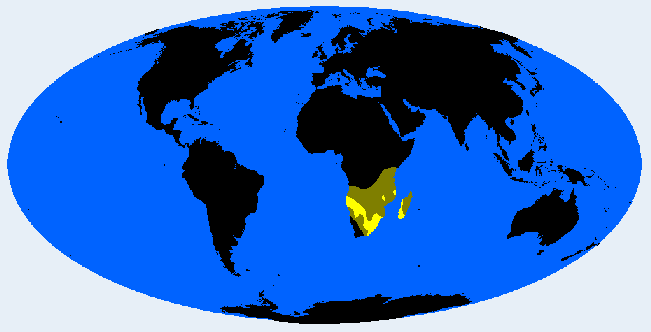Description:
Bantuid variety, characterised by relatively wide skulls and robust faces. Especially found in the Kwazulu Natal / Transkei regions of South Africa and Swaziland, extends through many regions of Southern Africa and Madagascar. Originated from Bantu expansion some millennia ago. Typified by Zulu, Swazi, Bhaca, also in Makua, Kwanyama, Hlubi, Fengu, Ovambo, Pondo and many more, spread to Namibia in the Middle Ages (e.g. Damara, sometimes Herero).Physical Traits:
Dark, sometimes medium brown skin, usually kinky, sometimes peppercorn hair. (Rather) tall, mildly brachyskelic, endo- mesomorph. Dolicho- mesocephalic, orthocranic, sometimes chamaecranic. Slightly narrower, more robust faces than other Bantuids, hairiness stronger, eyes more deep-set, brow ridges may be present. Platyrrhine nose, mouth large. Prognathy mild, chin sometimes receding.Literature:
Named South Bantuid by Eickstedt (1934) and kept later as South Kaffrid (Eickstedt, 1951; Schwidetzky, 1965; Hirschberg, 1974). Lundman (1967) highlighted differences to other Bantuids. Corresponds with Dart's (1962) Bhaca-Swazi-Zulu "group B". Also called Zambesid (Vallois, 1971).







